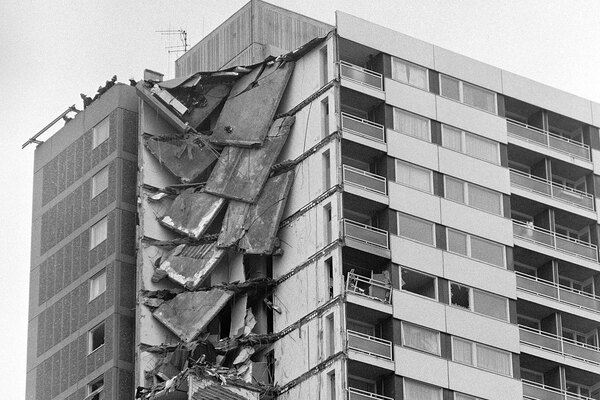BRE described as ‘buck-passing incompetents’ after inaction on cladding warning
The Building Research Establishment (BRE) was described as “a buck-passing load of incompetents” by a senior industry figure that had tried to warn it about the widespread use of the dangerous cladding later installed on Grenfell Tower, the inquiry heard today.
During the questioning of Sarah Colwell, one of the top scientists at BRE, an email sent by Phil Cook, managing director at supplier Euroclad, was disclosed which saw him express his frustration with the organisation due to its reluctance to advise on whether or not highly combustible aluminium composite material (ACM) cladding complied with official guidance.
It came after his colleague, Nick Jenkins, had sent an email to Ms Colwell seeking clarity on whether ACM PE could be used on buildings taller than 18m, stating that he was aware these “panels burned efficiently” and were being installed on a number of new buildings alongside combustible insulation.
Despite calls for an urgent response, Mr Jenkins was forced to send two follow-up emails to Ms Colwell before she replied.
After initially responding to the email, Mr Jenkins then had to wait a further seven days for a full response which advised him to contact Brian Martin, the senior civil servant responsible for building safety regulations at the Department for Communities and Local Government (DCLG).
After viewing the exchange, Mr Cook replied to Mr Jenkins describing the BRE as “a buck-passing load of incompetents”.
Asked if she agreed with this description today, Ms Colwell said she did not. “Given that DCLG needed to be made aware of it and the people that were able to provide the definitive guidance they were seeking, they were the right people to address it,” she said.
After forwarding on his original email asking for clarity to Mr Martin, the civil servant responded by stating that the core of an ACM panel “could be considered filler”. This, he argued, meant guidance required it to meet the tough fire standard of ‘limited combustibility’ or pass a large-scale test, but this was not an interpretation widely accepted in the industry.
Mr Martin added: “If the designer and building control choose to do something else, that’s up to them.”
A follow-up email from Mr Jenkins stressed that there had been no large-scale tests on ACM PE products and that the number of buildings containing these materials were “many” and “growing”.
He suggested that the part of Approved Document B on external wall construction be revised to “reduce ambiguity” and called for a meeting with relevant bodies to review this.
Mr Martin agreed that a meeting was a good plan and that he would be “happy to help where he could”. He also said: “Constructions complying with rule of thumb may well fail [a large-scale test]... In an ideal world we’d make the test mandatory but that would be too costly to justify.”
When asked by counsel to the inquiry Kate Grange QC if she was surprised that Mr Martin could not give a definitive answer to Mr Jenkins that ACM was not permitted under his own guidance, Ms Colwell said it was “very much in the style of Brian’s responses”.
“I was used to seeing that style of response, so I didn’t read too much into it at the time,” she added.
Earlier in the day, evidence focused on Ms Colwell’s failure to produce a frequently asked question (FAQ) to clarify that ACM should not be used.
Yesterday, the inquiry heard that Ms Colwell was told by a group of industry leaders in July 2014 that she should draft an FAQ to clearly set out that ACM should not be used on tall buildings, having been warned that existing guidance appeared to permit its use.
However, she revealed that in August 2014 she and BRE colleagues had decided against bringing an FAQ forward and would instead wait for a forthcoming revision of Approved Document B to deal with it.
But minutes of a meeting in September of that year show that those present, including Ms Colwell, had agreed that she would prepare the words for the FAQ.
When asked if she left those at the meeting with the impression that she was still going to do so, she said that she had not discussed her intention not to “as openly as she could have”.
The inquiry also produced an email from David Metcalfe, director at Centre for Window and Cladding Technology, sent in March 2015 in which he asked for progress on the FAQ.
In her response, Ms Colwell said the document has been drafted and was hopeful it could be “closed out soon” and “would be circulated”.
When asked by Ms Grange whether this email was “totally misleading”, Ms Colwell said: “Yes, it is”.
She added: “It gives off the wrong impression based on the response he has asked for, yes.”
It would later transpire that Mr Metcalfe sent a five more follow-up emails over the course of the rest of the year, all of which were not responded to by Ms Colwell.
The inquiry continues next week.
Sign up for our weekly Grenfell Inquiry newsletter
Each week we send out a newsletter rounding up the key news from the Grenfell Inquiry, along with the headlines from the week
Already have an account? Click here to manage your newsletters












